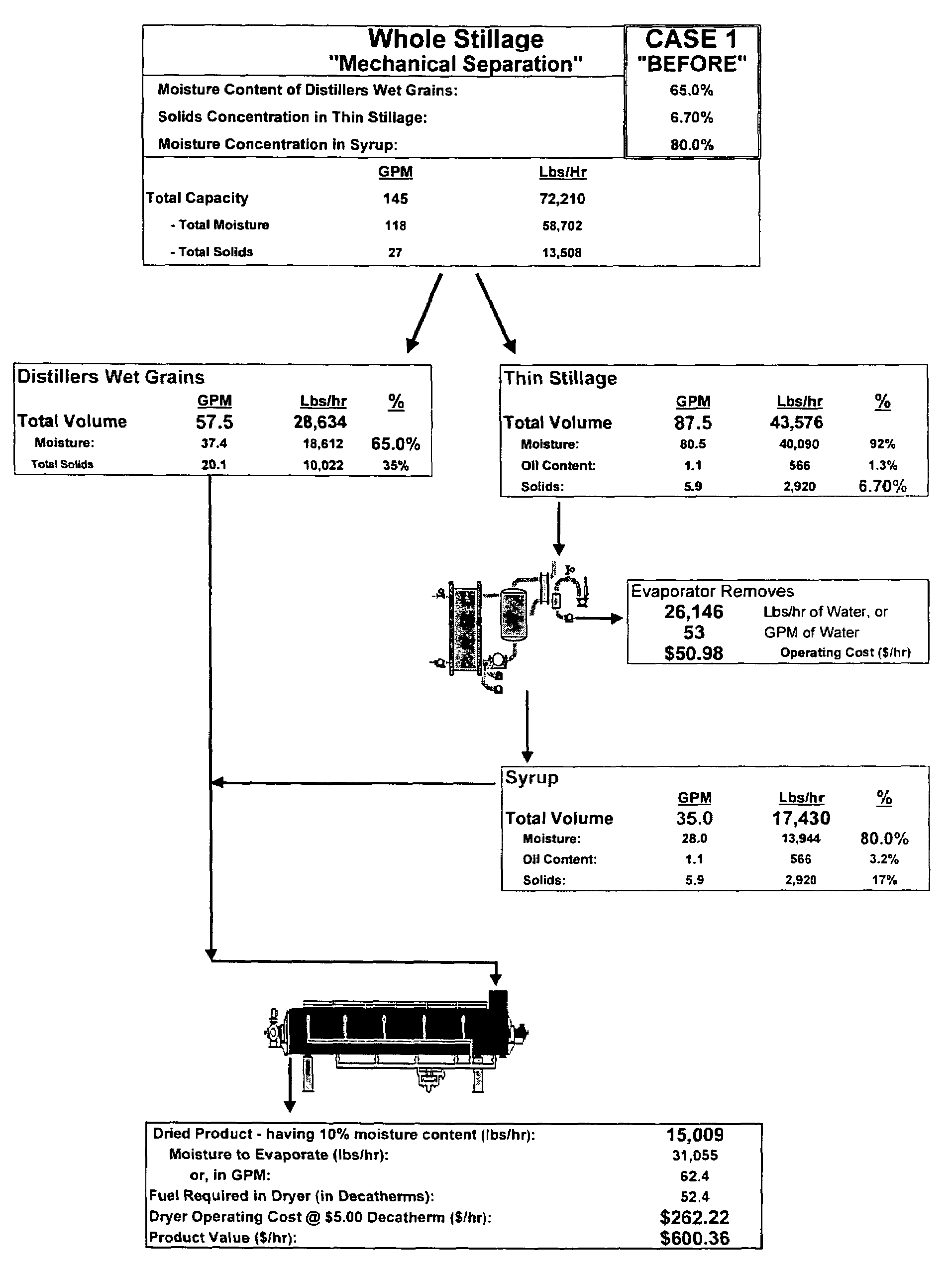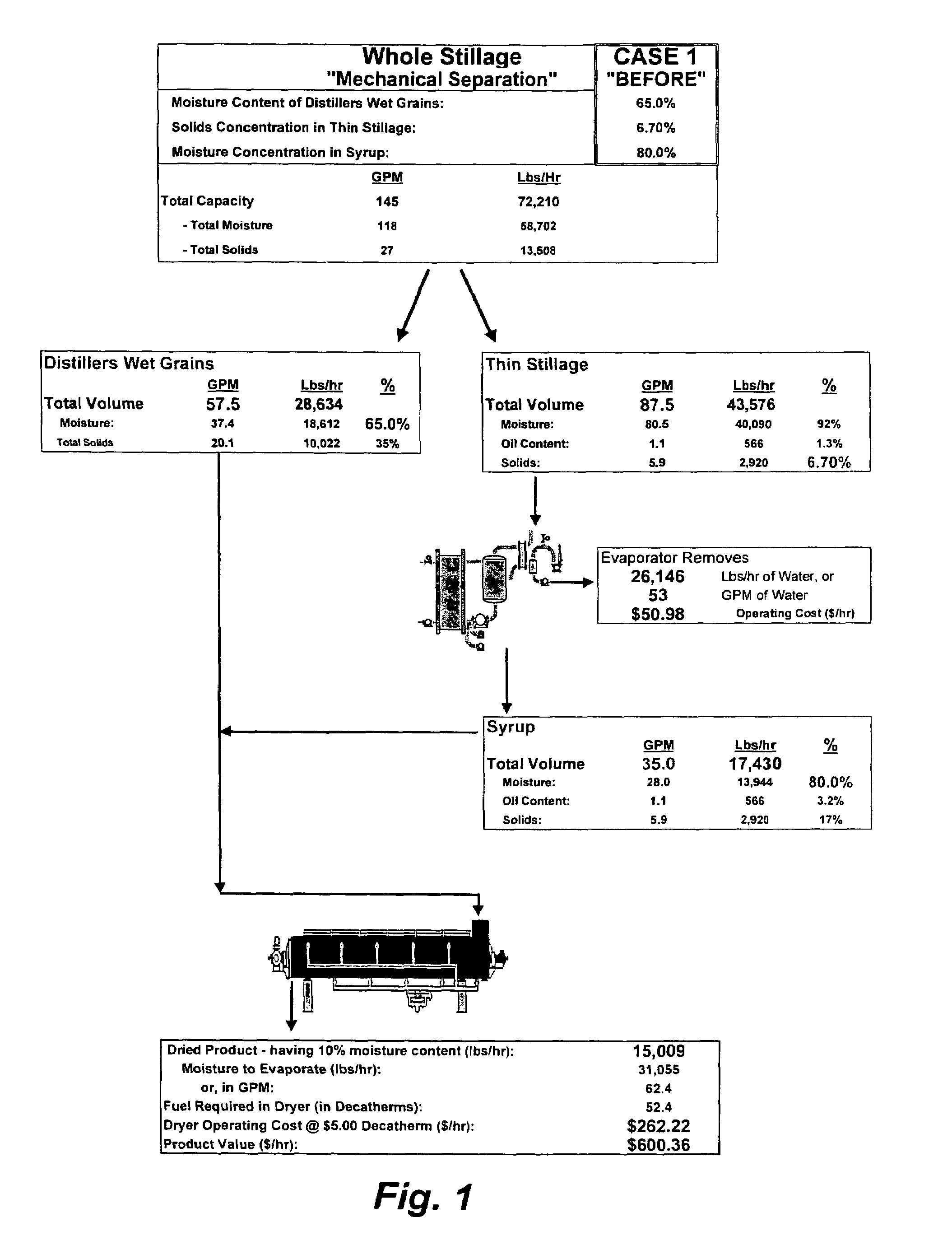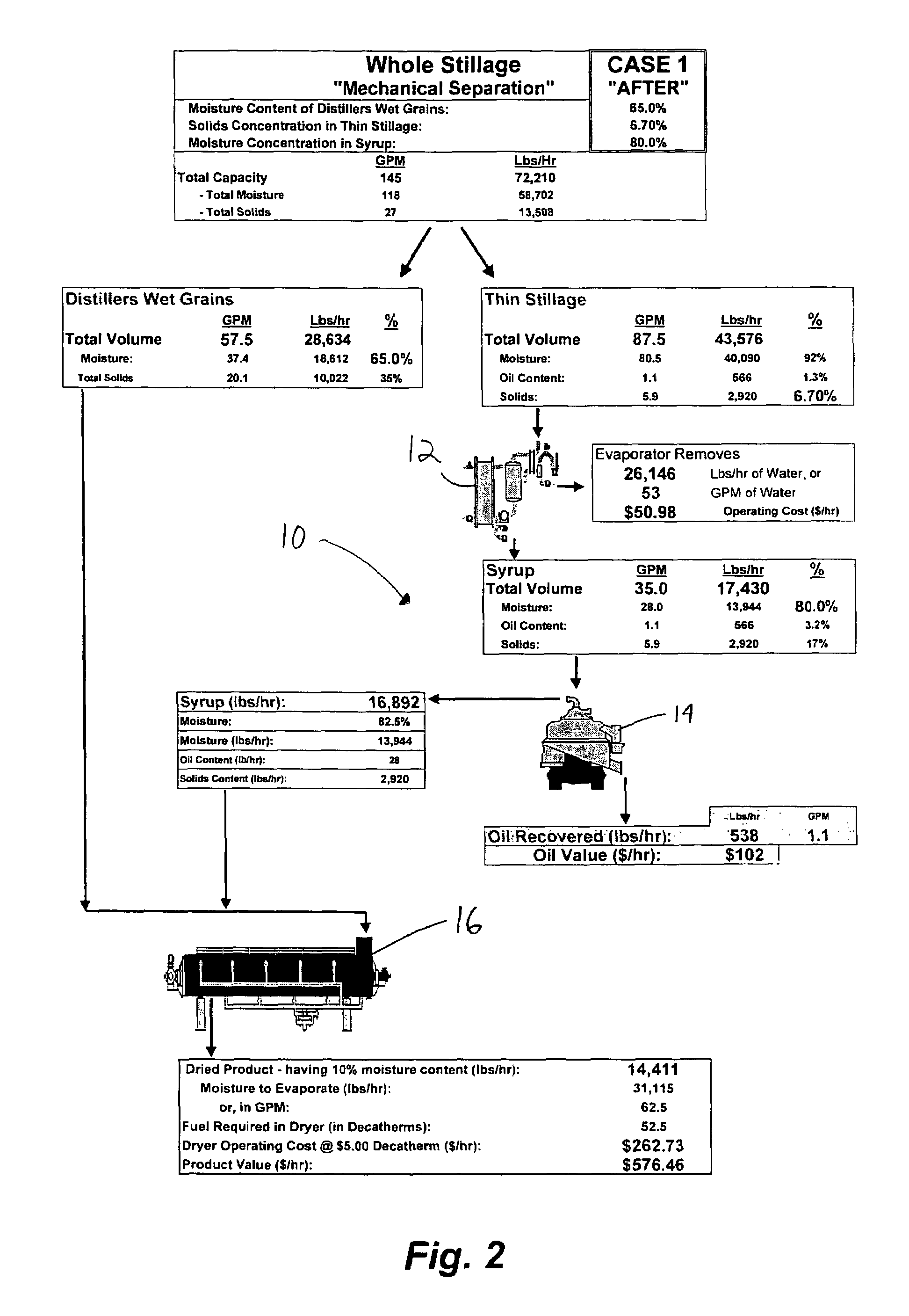Method of processing ethanol byproducts and related subsystems
a technology of ethanol byproducts and subsystems, applied in the field of recovery oil, can solve the problems of undesirable emulsion phase, inability to produce usable oil, and inability to recover valuable oil from this byproduct in terms of efficiency or economy
- Summary
- Abstract
- Description
- Claims
- Application Information
AI Technical Summary
Benefits of technology
Problems solved by technology
Method used
Image
Examples
example 1
[0027]Reference is made to FIGS. 1 and 2 to illustrate schematically a first example demonstrating the efficacy of the present method.
[0028]FIG. 1 represents one technique for processing whole stillage resulting from dry milling corn to create distillers dried grains with solubles. The whole stillage leftover after deriving the ethanol is mechanically separated into distillers wet grains (approx. 35% solids) and thin stillage (approx. 6.7% solids), such as by using a centrifugal decanter. The thin stillage is then introduced to an evaporator to create a syrup having a moisture content of approximately 80% by weight and about 17% solids by weight. The syrup is then recombined with the distillers wet grains, introduced to a drum dryer, and dried to reduce the overall moisture content to approximately 10% by weight. An estimated total value of the resulting distillers dried grains with solubles is $600.36 per hour.
[0029]FIG. 2 represents the inventive method and a related subsystem 10 ...
example 2
[0031]Reference is made to FIGS. 3 and 4, which illustrate a prophetic comparison between one processing method and the inventive method. The set-up is essentially the same as shown in FIGS. 1 and 2, but a more effective centrifugal decanter is used than the one used in Example 1. As a result, the syrup introduced to the disk stack centrifuge 14 would have a moisture content estimated at 60% by weight. While this does not impact the product value figures, the syrup from the centrifuge 14 has a moisture content of only 66.6% by weight, as compared to 82.5% by weight in Example 1. As a result, the cost per hour of drying this syrup when combined with the distillers wet grains to achieve an end product having a moisture content of less than 10% is only $158.92, or approximately 40% less. Assuming a savings in dryer efficiency of 10%, the product value per hour ($678.46) less the estimated dryer operating cost ($143.03 per hour) and less the estimated evaporator operating cost ($74.96 p...
PUM
 Login to View More
Login to View More Abstract
Description
Claims
Application Information
 Login to View More
Login to View More - R&D
- Intellectual Property
- Life Sciences
- Materials
- Tech Scout
- Unparalleled Data Quality
- Higher Quality Content
- 60% Fewer Hallucinations
Browse by: Latest US Patents, China's latest patents, Technical Efficacy Thesaurus, Application Domain, Technology Topic, Popular Technical Reports.
© 2025 PatSnap. All rights reserved.Legal|Privacy policy|Modern Slavery Act Transparency Statement|Sitemap|About US| Contact US: help@patsnap.com



